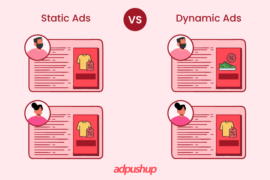Display ads are still the mainstay of web monetization for publishers over two decades after they were first launched. But increasingly over the past few years, relying only on display ads for generating ad revenue has become an increasingly risky proposition—banner blindness led to the gradual declining of CTRs with ad blocking delivering the final blow to publishers.
Thankfully, newer ad formats have helped publishers some of these problems and diversify their monetization stream. One such format is in-image ads: Digital ads overlaid on editorial images. This guide will help you understand how in-image ads work and how they can help you create additional revenue.
How do in-image ads work?
In-image ads rely on computer vision and AI technologies to scan the web page for editorial images, image data, tags, and surrounding content. This data is used for contextually matching the ads to the images on which they are overlaid. So an image gallery of the Royal Wedding may run ads from apparel brands.
Do they work on mobile?
Absolutely, since in-image ads are responsive and built using HTML 5, they are well-suited for mobile environments. In fact, they have a slight advantage over traditional banner ads as they occupy no extra space on a web page given that they are overlaid on existing media.
What about brand safety?
Since in-image ads are contextual and scan the content before the ads are matched and served, advertisers can set block and whitelist rules just as you would with standard banner ads. This makes in-image ads a good option for buyers concerned about brand safety.
Is the delivery direct or programmatic?
Depending on the network that you work with, you can use either or both options.
What’s in it for publishers?
In-image ads can help publishers create an entirely new revenue channel without disrupting the content layout or user experience of their website. It’s a win-win.
How effective are in-image ads?
As with other types of digital advertising, in-image ads are measurable, so you always know the impression count, engagement rates, and revenue generated. According to John Stubley, managing director APAC at GumGum, “…in-image ads achieve an average of 81 percent viewability rate and deliver seven times more engagement than traditional display options.”
How do I get started?
We help publishers implement in-image advertising by plugging in premium demand from our partner ad networks and exchanges into high-yield in-image formats, sign up here to get started.

Shubham is a digital marketer with rich experience working in the advertisement technology industry. He has vast experience in the programmatic industry, driving business strategy and scaling functions including but not limited to growth and marketing, Operations, process optimization, and Sales.



![CTV vs OTT Advertising: Which one is Right Pick for Publishers? + [6 Bonus Strategies] Ott vs Ctv](png/featured-image-270x180.png)



